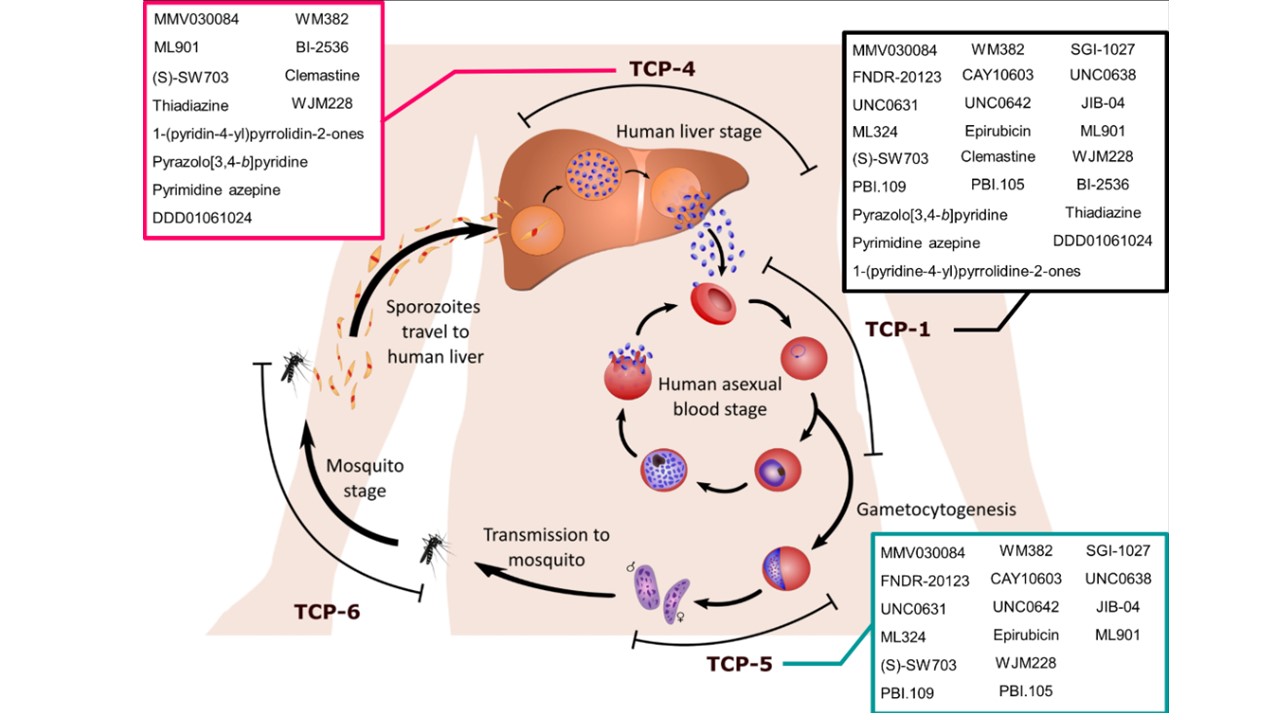The life cycle stages of Plasmodium parasites. Sporozoites are introduced into the human body via a blood meal of a female Anopheles mosquito. Sporozoites invade the human liver and replicate asexually for 1-2 weeks whilst the host remains asymptomatic. Compounds targeting liver stage Plasmodium parasites satisfy the target candidate profile 4 (TCP-4) criteria. Once the parasitaemia reaches a threshold, the liver schizonts burst into hundreds of merozoites that invade host red blood cells (RBCs). At this stage of the Plasmodium lifecycle, the host will become symptomatic and require effective antimalarial treatment to clear the asexual blood stage parasitaemia (TCP-1). The asexual blood stage consists of rings, trophozoites, schizonts and merozoites. Whilst Plasmodium parasites amplify their number in the asexual replication stage, a portion of rings commit to sexual differentiation into gametocytes via a process called gametocytogenesis. Compounds with TCP-5 display transmission-blocking activity against gametocyte parasites, the sexual stage. Once these gametocytes are ingested by mosquitoes, the male and female gametes fuse into a zygote, which further develops into an ookinete. The ookinete migrates across the mosquito gut epithelium to form an oocyst, which releases sporozoites after a series of replication events. Transmission-blocking activity against the mosquito vector is described as TCP-6. Sporozoites eventually travel to the mosquito salivary gland and prepare for the next infection, thus completing the lifecycle. Compounds satisfying TCP-1, TCP-4 and TCP-5 are listed in the black, magenta and turquoise boxes respectively.
Luo AP, Giannangelo C, Siddiqui G, Creek DJ. Promising antimalarial hits from phenotypic screens: a review of recently-described multi-stage actives and their modes of action. Front Cell Infect Microbiol. 2023 13:1308193. PMID: 38162576
